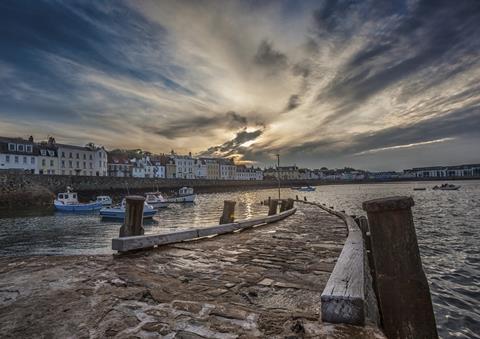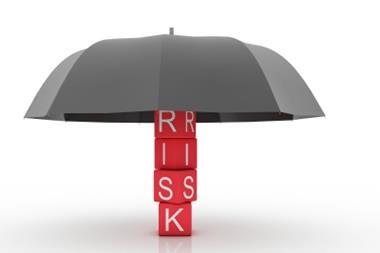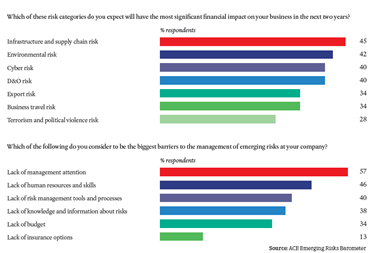The Channel island continues to lead the way with captives, protected cell companies and insurance-linked securities, while offering certainty against the prevailing Solvency II regime

Innovation and a firm stance on Solvency II has allowed Guernsey to thrive at a time when rates in the commercial insurance market are “super soft”.
However, undoubtedly, plenty of challenges face the insurance and captive insurance market. Commercial insurance and reinsurance prices remain low following a continued influx of capital market capacity and a year that was free of major catastrophe losses.
“Rates are quite soft and yet there’s an awful lot of capacity being attracted into the insurance market,” says Dominic Wheatley, managing director of Willis Management (Guernsey).
“If you think about those two ideas in tandem, you realise it’s a slightly bizarre world we live in – unless you take the view, as I do, that rates may be soft by reference to historic norms, but not as soft as they have been in the past in relation to returns of capital achieved in the insurance industry.”
Despite the soft (re)insurance market, Guernsey continued to grow in 2013. The Guernsey Financial Services Commission (GFSC) licensed 89 new international insurers, bringing the total to 758 at the end of the year. This maintains its position as the largest captive domicile in Europe and the fourth largest in the world.
For major corporates, it is clearly a buyer’s market in mainstream insurance and the impetus to self-insure is arguably less pronounced. So where is the growth coming from?
With the insurance cycle inextricably linked to captive growth, captive managers have had to innovate and seek new opportunities to grow their business. A quick look at Guernsey’s licence statistics reveals a number of new trends, with much of the growth relating to cell companies and increasing use of insurance-linked securities (ILS).
“I wouldn’t say that necessarily the mix of business coming into the island is in line with the traditional mix of business – or is indeed conventionally captives in the sense of being risk-financing vehicles for corporate entities,” says Wheatley. “It’s more niche, using insurance technology to bring risk and capital together but not necessarily in the corporate risk-financing context.”
While maintaining its dominant position within the captive sector, Guernsey has built on its existing infrastructure to offer a broader gamut of insurance and financial solutions.
A big part of this is an increase in the use of cells – a Guernsey innovation, with the first protected cell company (PCC) set up in the domicile in 1997. There are now 69 PCCs and seven incorporated cell companies (ICCs), which are used for risk financing, to conclude International Swaps and Derivatives Association (ISDA) arrangements and fully collateralised ILS transactions.
“Guernsey is bucking the trend in terms of its growth, and I think that is attributable to the innovation in our business,” says Paul Eaton, director of new business at Heritage Insurance Management. “For example, an area of significant growth is cells being used to facilitate fully collateralised reinsurance structures.
“We’re also seeing the captive market continue making inroads to employee benefits lines. That whole area, including pension fund longevity risk, is really starting to generate significant interest.”
The UK government chose Guernsey to set up a PCC as part of its NewBuy scheme in 2012. The scheme was launched in conjunction with the Home Builders Federation (HBF) and the Council of Mortgage Lenders to offer prospective home owners newly built properties with 95% mortgages underwritten by the UK government. The PCC provides insurance to the lenders under NewBuy, as well as being the conduit for the guarantee from the UK government. It has 50 regulated cells, including several multi-user cells.
Affordability issues
Cells also offer a good solution for sectors that are experiencing difficulty in accessing affordable insurance. “A classic use for captives is helping lawyers’ with their professional indemnity insurance, when the commercial insurance market hardens or loses capacity,” says Eaton. “The last renewal season was difficult and it’s been well reported that a large number of companies have had to stop trading or be acquired, as a result of being unable to find the necessary PI insurance.
“Heritage recently had a number of enquiries from law firms that had experienced large rate increases and the application of substantial deductibles to their policies. This led many of them to seek a captive structure that could accommodate their retained risk,” he adds. “This is a good example of a situation that can cause a medium-sized company to look for a cell company solution.”
One of the biggest benefits offered by cell companies is that they lower barriers to entry. “If you look back 20 years, the captives were really the preserve of the FTSE 100s,” says Fiona Le Poidevin, chief executive of Guernsey Finance. “Guernsey has about a 40% market share of all the FTSE 100s that have captives, but now, with the cell company concept, SMEs can benefit from the captive model by taking a cell of a PCC.
“That’s why they’ve become so much more popular – they are cost efficient and administration is efficient. It also reflects the sophistication of the captive managers who are able to service different types of clients and types of risk.”
Competitive edge
Much of the recent innovation in cell companies and ILS structures has been necessary, explains Wheatley. “New entrants to the industry have emerged in the past two to three years. The competition does inspire people to go out and look for business. There is a real competitive element to the industry here that is very positive.
“Guernsey has a pretty mature industry and has critical mass with well-established expertise, particularly in the cell area. The technical development and innovation around cell structures has always been very strong here.
“There’s a real offshore insurance community, which helps in the innovation process. There’s a movement of people between companies and that leads to a sharing of technology and so on. It all helps Guernsey plc to grow and attract business.”
The dramatic growth of the ILS market has provided plenty of opportunities for captive managers. Guernsey has been quick to develop a reputation for its special-purpose insurers, cat bonds and transformer structures. In January, Guernsey law firm Bedell Cristin was recognised for an Islamic finance deal placed on behalf of European insurance group FWU.
“A lot of the growth we’ve seen in the insurance industry over the past year has been in ILS, so it’s been quite good to see us diversifying,” says Le Poidevin. “At the end of 2012, ILS investment fund DCG Iris was listed on the London Stock Exchange and it has been very successful to date.
“We have formed a group with representatives from both the funds and insurance industry, so we’re better able to promote our services in that area. Not only are we able to create the insurance structures but we’re also able to set up funds and to carry out the listings work. Indeed, Guernsey has more entities listed on the London markets than any other non-UK jurisdiction.”
The capital markets – increasingly pension funds and institutional investors – are showing increasing comfort in investing in insurance products such as industry loss warranties, catastrophe bonds and collateralised reinsurance entities. The yield on offer in the low interest rate environment has captured their interest and the fact that insurance risk is largely uncorrelated to other markets is also attractive.
While up to 75% of ILS capacity is currently focused on US catastrophe risks, this is expected to change in the future as the sector expands and develops. As London and Zurich grow their importance as ILS centres, Guernsey should benefit further, Le Poidevin believes.
“There are a few key players here in the market, but we also have several lawyers who are well versed in ILS now. There have been some prominent listings on the Channel Islands Securities Exchange based in Guernsey, so we can offer quite an efficient route to market,” she says.
“Guernsey also has the highest number of listings on the London Stock Exchange outside the UK. At the same time, Guernsey has an incredibly successful investment funds industry, so we’re able to marry up the insurance experts with the fund managers and fund administrators and it makes a lot of sense to do that.”
“No” to Solvency II
Another factor that has boosted business is the decision not to seek equivalence with Solvency II. At a time when rival domiciles are getting ready to implement Europe’s new regulatory regime for the insurance sector, Guernsey announced in 2011 that it would not be going down that route.
And, as Le Poidevin explains, that decision has offered certainty to the domicile’s international client base. “Some of the growth we’ve seen in the captive sector over the past couple of years has probably come from the decision we made about Solvency II,” she says. “We’ve seen quite a few migrations recently from Bermuda because we’ve been able to give that certainty.
“Guernsey is not in the EU, so we chose not to participate in the Directive or seek equivalence as a third country. Solvency II was set up to protect third-party policyholders and it just doesn’t suit the captive model at all.”
Under Solvency II’s “narrow definition” of captives, 80% of European captive insurers would fail to benefit from proportional treatment under the new regime, warns ECIROA (the European Captive Insurance and Reinsurance Owners’ Association). In a letter to the European Commission, the association refers to a “number of outstanding issues that we look forward to resolving with the Commission and EIOPA”.
“Without doubt, the current business mix in Guernsey would not be sustained were Solvency II equivalence to be pursued,” says Wheatley. “The regime will be quite onerous for certain types of captive vehicle and create a fairly hostile environment. Not because Solvency II is fundamentally unreasonable in the context of mainstream insurance, but because in the context of the relatively small niche of insurance structures we specialise in in Guernsey, Solvency II would be an inappropriate regime and one that would be difficult to
sustain on an economic basis.”
Regulatory burden
He continues: “It does place a significant regulatory burden on captives potentially and I would think that does actually present a little bit more of a barrier to growth.
“On the other hand, Willis is still working with people to set up captive vehicles in Europe and for companies for whom Europe is their dominant theatre of operation. If they’ve got scale and a sophisticated approach to risk management and risk financing, then captives can still work and do still work in a Solvency II environment.”
The biggest concern for European captive owners is the capital requirements under Solvency II. Those that fall within the scope of the regulation and do not qualify for proportional treatment (eight out of 10, according to ECIROA) will be subject to significantly higher solvency requirements than now. Monoline captives are particularly likely to see their capital burden increase substantially.
“I’ve had a lot of feedback from clients thanking us for not going down the Solvency II equivalence route,” says Martin Le Pelley, compliance director at Heritage Insurance Management. “In Guernsey, we are developing a risk-based regulatory regime that will be calibrated to a 90% confidence level rather than 99.5%, which is what Solvency II requires, because 90% is deemed to be an appropriate level for captive insurance. This means the solvency requirements will be comparatively lower than would be the case in Europe and captive owners will continue to take advantage of an appropriate capitalisation of their captive.
“We’re hopeful that people are going to start making some strategic decisions. We’re already seeing strategic decisions being made because of the fact that Guernsey is taking a different stance with regard to risk-based regulation. We’re seeing decisions being made to set up captives in Guernsey rather than the EU because the EU hasn’t taken proper consideration of the impact of the Solvency II regime on captives.”
PHOTO SOURCE: Image courtesy of VisitGuernsey
Vital statistics
European captive ranking: 1
World captive ranking: 4
International insurance entities: 758
Licensed managers: 20
Captives from FTSE 100: 40%
Captives from Global 1500: 95
Innovation PCC: 1997
Tax regime: 0%
EU member: No
Regulator: GFSC
Data Source: Guernsey Finance
Expert insight: Strategic thinking makes the difference for Guernsey
The news that Guernsey licensed 89 new international insurers in 2013 is exciting not merely because
it reinforces Guernsey’s position as Europe’s leading offshore insurance centre but because the growth has taken place when the insurance market is described as “super-soft”.
In theory, the sector shouldn’t grow when market rates are soft because lower insurance premiums can mean companies have less need to insure themselves in captives and cell companies. It’s no wonder then that the chief minister of Guernsey described the island’s insurance industry as “the beautiful sector”.Guernsey was also named European Captive Domicile of the Year at the UK Captive Services Awards 2013.
A significant proportion of the licences issued in 2013 were associated with structures related to insurance linked securities (ILS), whereas similar levels of growth in 2012 were fired by the UK government’s NewBuy scheme and HBF PCC. Guernsey’s insurance sector has diversified from being a centre for captive insurance into an international centre for both general and life insurance and reinsurance.
A fundamental shift is taking place in the insurance market with the emergence of ILS. Guernsey has positioned itself as an alternative to Bermuda. It has political and economic stability, no government borrowing and a regulatory regime that is at the forefront of international best practice – the implementation process of the IAIS Insurance Core Principles is reaching an advanced stage.
The groundwork for ILS was laid in Guernsey from 2005 and the number of transactions built year on year.
The surge in deal flow in 2013 came about as convergence gathered momentum – the knowledge base already existed between the insurance managers, legal firms and the regulator, the Guernsey Financial Services Commission (GFSC).
It’s been said that the hard part of being successful is staying successful; Guernsey stakeholders are aware of this. The Guernsey International Insurance Association established a Market Development Committee and an ILS sub-committee in 2013 to continue to develop Guernsey as an attractive environment for establishing international insurance entities.
Of particular importance is our regulatory regime, which continues to respond to innovative proposals. This was reinforced by the GFSC’s decision to form an Innovation Unit.
Aon was delighted to team with Bedell Cristin to deliver the sharia-compliant ILS structure, which was judged as the top innovative deal in Europe and one of the Islamic Finance Deals of the Year in 2013. We now have the opportunity to position Guernsey as a partner for more sharia-compliant structures.
Further evidence of strategic thinking bearing fruit is the decision taken in January 2011 not to seek equivalence with Solvency II. This now looks prescient in the light of the recent announcement from the European Captive Insurance and Reinsurance Owners’ Association that as Solvency II stands “eight out of 10 European captives will fail to qualify for simplified solvency capital treatment in 2016”. We have seen a number of Bermuda relocations already and Guernsey stands well positioned to provide the natural alternative jurisdiction for EU-based captives looking to escape the punitive effects of Solvency II.Guernsey’s solvency model will be IAIS-compliant and provide a proportionate confidence level for captives. Meanwhile, confidence levels in the Guernsey insurance industry are at an all-time high.
Paul Sykes, managing director, Aon Insurance Managers (Guernsey) Ltd and chairman of Guernsey International Insurance Association




















No comments yet